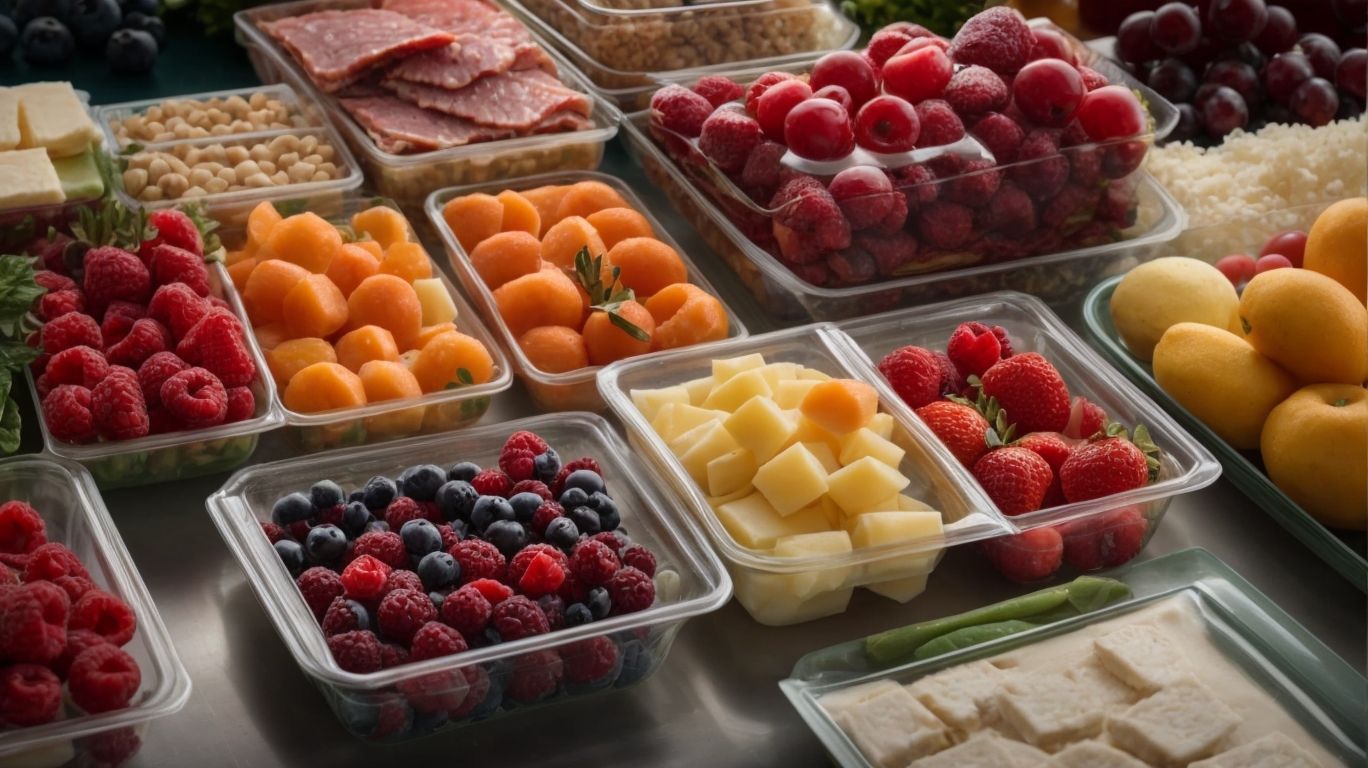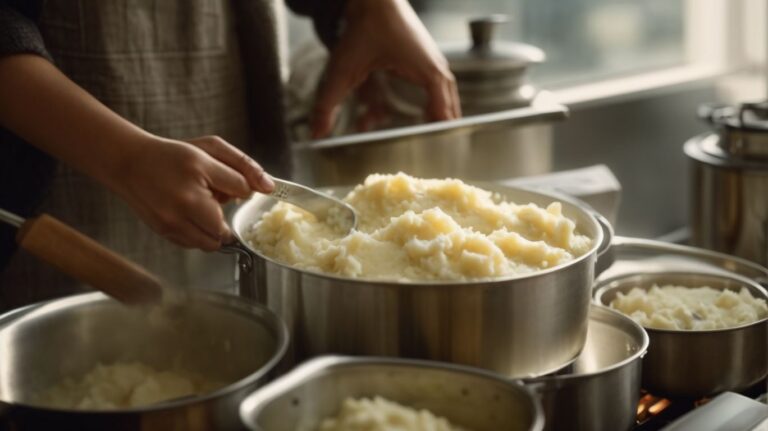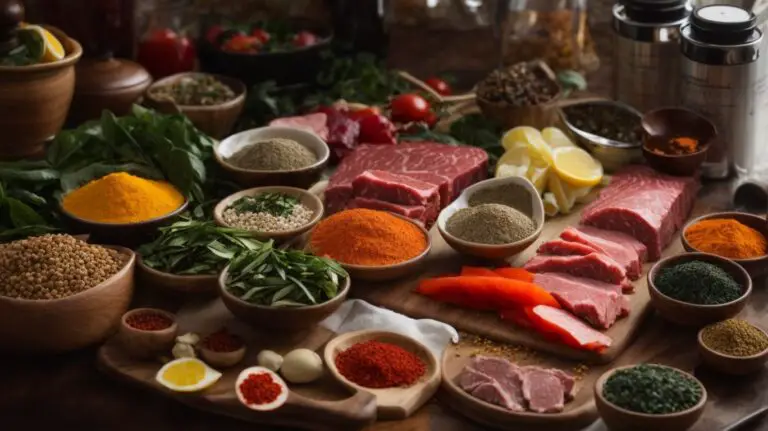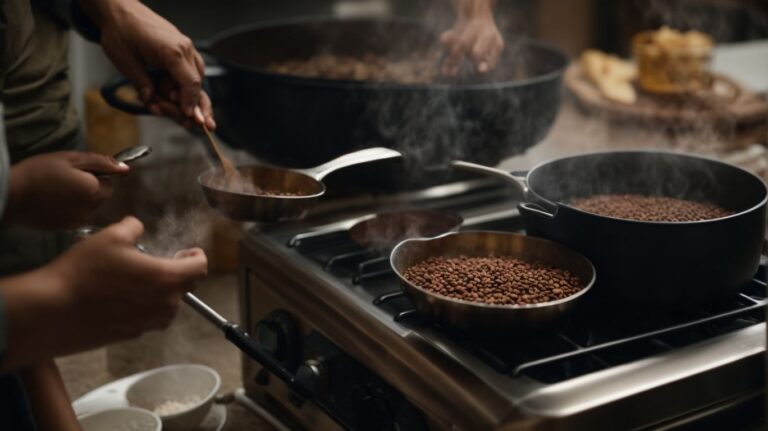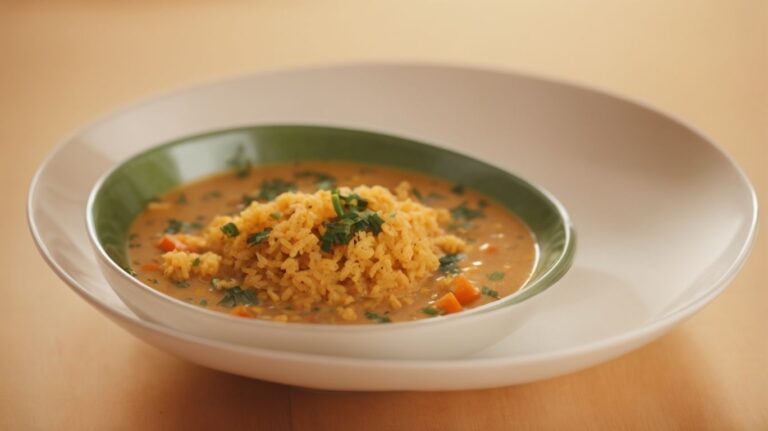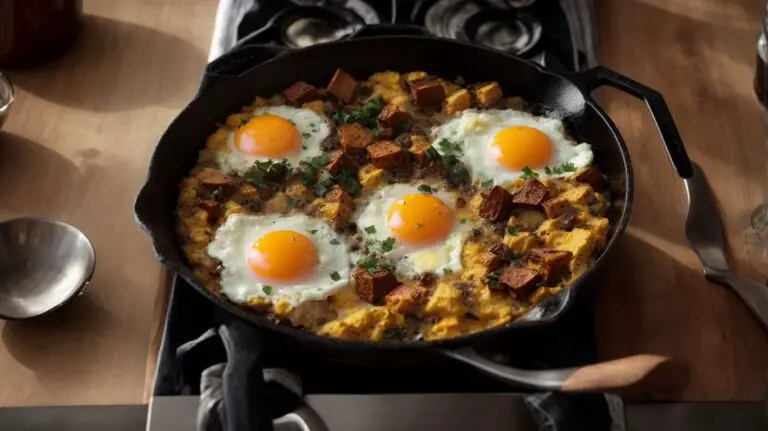How to Cook Meals From Frozen?
Are you tired of rushing to cook meals after a long day at work?
Cooking meals from frozen can be a game-changer when it comes to convenience, saving time, and reducing food waste.
Discover why cooking meals from frozen is a great option, what foods can be cooked from frozen, tips on properly thawing frozen foods, and different methods for cooking them.
Get some helpful tips on cooking meals from frozen that will make your life easier in the kitchen!
Key Takeaways:
Why Cook Meals From Frozen?
Cooking meals from frozen offers a myriad of benefits, from convenience to preserving food quality and ensuring safety.
One of the key advantages of cooking from frozen is the time-saving aspect. With frozen ingredients readily available, meal preparation becomes quicker and more efficient. Cooking from frozen helps to lock in the flavor and nutrients of the food, resulting in a more flavorful and nutritious meal. Following safety guidelines when cooking from frozen ensures that foodborne illnesses are prevented, making it a reliable method for meal preparation.
Convenience
One of the primary reasons to cook meals from frozen is the unparalleled convenience it offers busy individuals.
Cooking from frozen eliminates the need for thawing, reducing meal prep time significantly. With the busy lives many lead today, the prospect of avoiding the waiting time associated with thawing food is a game-changer. It allows individuals to simply take a frozen meal, pop it in the microwave, and have a hot, delicious meal ready in minutes.
This method not only saves time but also eliminates the hassle of planning ahead. Whether it’s a quick dinner after a long day or a last-minute lunch, having frozen food that can be cooked directly from the freezer is a real lifesaver.
Saves Time
Cooking meals from a frozen state can significantly reduce the overall cooking time required, making it a time-saving option for efficient meal preparation.
When you cook from frozen, you bypass the laborious step of thawing, which can be a game-changer when time is of the essence. Ovens are particularly suited for cooking dishes directly from the freezer, cutting down the preparation time considerably. Not having to thaw also helps seal in the flavors and nutrients of the food, preserving quality and taste. This method not only provides convenience but also adheres to proper cooking rules by ensuring that food is cooked through and safe to eat.
Reduces Food Waste
Utilizing frozen foods directly for cooking helps in minimizing food waste, as it eliminates the need for thawing and reduces the risk of foodborne illnesses.
When food is frozen, it stays fresh longer without the need for immediate consumption, making it a convenient choice for busy households. By cooking directly from frozen, you can skip the time-consuming thawing process, saving both time and energy. This method also prevents the food from entering the ‘danger zone,’ where bacteria multiply rapidly, thus reducing the chances of foodborne illnesses. Proper food preparation is essential for maintaining food safety standards, and cooking from frozen is a simple yet effective way to achieve this.
What Foods Can Be Cooked From Frozen?

Credits: Poormet.Com – Brandon Jackson
A wide variety of foods can be cooked directly from the frozen state, including vegetables, fruits, meats, and more, offering versatility in meal preparation.
In terms of vegetables, options like broccoli, cauliflower, and peas can be easily steamed or stir-fried from frozen, preserving their nutrients and saving time on chopping and prepping. Fruits like berries are perfect for smoothies or baking straight from the freezer.
For meats, chicken breasts, fish fillets, and shrimp can all be cooked from frozen in the oven or on the stovetop, ensuring a quick and hassle-free protein source for your meals.
The convenience of using frozen ingredients extends to meal prepping as well, allowing you to always have a variety of options on hand for quick and nutritious meals.
Frozen Vegetables
Frozen vegetables are a popular choice for cooking from frozen, offering convenience and preserving nutritional value when prepared using the right cooking techniques.
One of the key benefits of using frozen vegetables is that they are pre-cut and pre-washed, saving you valuable prep time in the kitchen. Frozen vegetables are picked and frozen at their peak ripeness, locking in essential nutrients, unlike fresh produce that may have spent days in transit.
In terms of cooking, you can steam, sauté, roast, or even stir-fry frozen vegetables, making them incredibly versatile for various dishes. It’s crucial to remember that overcooking can diminish the nutritional content, so follow the recommended cooking times to maintain the quality and flavor of these convenient ingredients.
Frozen Fruits
Cooking with frozen fruits allows for year-round access to a variety of fruits, ensuring optimal flavor and texture if cooked following the right rules.
One of the primary benefits of utilizing frozen fruits in cooking is their consistent availability regardless of the season. This means you can enjoy your favorite fruits in your recipes any time of the year. Frozen fruits also retain their natural flavors, making them a reliable option for adding a burst of fruity goodness to your dishes.
To maintain the texture and taste of frozen fruits during cooking, it’s essential to refrain from thawing them completely before use. Instead, incorporate them directly into your recipes from their frozen state to prevent them from becoming mushy. The quick and gentle cooking methods like microwaving or light sautéing are ideal for preserving the texture and taste of frozen fruits.
Frozen Meats
Cooking frozen meats directly can be a time-saving option, but it is crucial to follow proper cooking guidelines to ensure food safety and quality.
When cooking meats from frozen, it’s important to use a reliable meat thermometer to ensure that the food reaches a safe internal temperature. Adjusting cooking times is key when dealing with frozen meats. For example, if you’re baking frozen chicken breasts, you may need to increase the cooking time to allow for thorough cooking without compromising the texture. Consider using methods such as oven-baking or pan-searing to retain the moisture and flavors of the meat. Food safety standards should always be a priority when handling frozen meats, so make sure to sanitize utensils, cutting boards, and cooking surfaces to prevent cross-contamination.”
How to Properly Thaw Frozen Foods?
Thawing frozen foods properly is essential to maintain food safety and quality, with methods ranging from refrigerator thawing to advanced techniques like sous vide.
Refrigerator thawing is a common method where frozen foods are placed in the refrigerator for gradual thawing, which helps in preserving the food’s texture and taste. Alternatively, cold water thawing involves submerging the sealed food in cold water, changing the water every 30 minutes until thawed. Immersion circulators provide precise temperature control, making them ideal for sous vide cooking, where food is vacuum-sealed and cooked gently in a water bath.
Refrigerator Thawing
Thawing frozen foods in the refrigerator is a safe and gradual method that allows for proper temperature control and minimizes potential bacterial growth.
By thawing frozen foods in the refrigerator, you are maintaining a safe environment that prevents bacteria from proliferating rapidly due to the consistent low temperatures. This method also ensures that the food thaws gradually, preserving its texture and taste. Refrigerator thawing provides the advantage of maintaining a temperature-controlled environment, helping to keep the food within the safe range to prevent any harmful bacterial growth.
Recommended temperature ranges for thawing in the refrigerator typically fall between 34-40°F (1-4°C). By staying within these temperatures, you ensure that the food thaws safely without reaching the temperature danger zone where bacteria can multiply quickly.
Cold Water Thawing
Thawing frozen foods in a cold water bath is a quicker method than refrigerator thawing, but it requires caution to prevent foodborne illnesses.
Cold water thawing can significantly reduce the time needed to bring frozen foods to a safe temperature for cooking or consumption. The rapid transfer of heat in water speeds up the thawing process, making it ideal for last-minute meal preparations. It is crucial to ensure that the food is securely wrapped in a leak-proof bag to prevent any contamination of the water. Regularly changing the water and keeping the food at a safe temperature during the thawing process are essential steps to avoid bacterial growth and food spoilage.
Microwave Thawing
Microwave thawing is a rapid method for thawing frozen foods, but it requires careful power setting adjustments and frequent checks to ensure even thawing.
One of the key advantages of microwave thawing is its speed in defrosting food quickly, making it a popular choice for busy individuals. To achieve optimal results, it is essential to adjust the power settings based on the item being thawed – higher power for denser foods like meat, and lower power for delicate items such as fish. Throughout the process, it’s crucial to pause and check for even thawing, rotating or rearranging the food as needed to prevent uneven defrosting.
Methods for Cooking Meals From Frozen
Various cooking methods can be employed to cook meals directly from a frozen state, including stovetop, oven, slow cooker, and Instant Pot cooking.
Stovetop cooking is a classic method that works well for quickly heating up frozen foods. It’s a versatile option where you can use a skillet, saucepan, or pot to cook everything from frozen vegetables to proteins.
On the other hand, oven cooking allows for even heating and crispy textures. Whether you’re baking frozen pizzas, roasting veggies, or cooking frozen entrees, the oven can do it all with minimal effort.
The slow cooker, also known as a crockpot, is perfect for busy individuals. You can simply dump frozen ingredients into the slow cooker in the morning and come home to a delicious, fully cooked meal in the evening.
The Instant Pot, a modern-day kitchen marvel, combines the functions of a pressure cooker, slow cooker, rice cooker, steamer, sauté pan, and more in one appliance. It’s ideal for quickly cooking frozen meats, grains, and soups, reducing cooking time significantly.
Stovetop Cooking
Stovetop cooking offers a quick and versatile way to cook meals from frozen using tools like non-stick skillets and saucepans.
In terms of stovetop cooking, the key is to ensure even heat distribution for consistent cooking. High-quality materials like stainless steel, cast iron, and copper are ideal choices for stovetop cookware due to their durability and heat retention properties.
Non-stick cookware works well for cooking frozen meals as it prevents sticking and allows for easy cleanup. For sautéing or searing frozen ingredients, a skillet with a larger surface area is recommended, while saucepans are perfect for simmering sauces and soups.
Oven Cooking
Oven cooking is a reliable method for cooking meals from frozen, ensuring even heat distribution and maintaining food quality when using oven-safe dishes.
One of the key benefits of utilizing an oven for cooking frozen meals is the precise temperature control it offers. Ovens allow you to set specific temperatures, ensuring that your food cooks evenly and thoroughly. This temperature control is crucial in preserving the flavors and textures of the ingredients, resulting in a delicious final dish.
When using oven-safe dishes, you can further enhance the quality of your meals. These dishes are designed to withstand high temperatures, allowing for even cooking and preventing any unwanted flavor transfer. They also help in retaining moisture, keeping your food tender and flavorful.
Slow Cooker Cooking
Slow cooker cooking is ideal for preparing frozen meals in large batches, offering convenience and ensuring tender textures with minimal effort.
One of the key advantages of using a slow cooker for frozen meals is the ability to batch cook, allowing you to prepare multiple servings at once and save time throughout your week. The slow cooking process enhances the flavors of dishes, creating rich, deep tastes that develop over time.
To make the most of your slow cooker, it’s essential to layer ingredients properly, starting with hard vegetables at the bottom and placing meat on top to ensure even cooking. Remember to refrain from lifting the lid during cooking to maintain consistent heat and moisture levels for tender, succulent results.
Instant Pot Cooking
Instant Pot cooking combines the speed of pressure cooking with the precision of sous vide, making it a versatile option for cooking meals from frozen.
One of the standout features of Instant Pot cooking is its ability to drastically reduce cooking times without compromising on flavor or tenderness. By leveraging the capabilities of high pressure, Instant Pot can tenderize tough cuts of meat and infuse flavors rapidly. In addition, the sous vide function allows for precise temperature control which is ideal for achieving perfect results with delicate proteins like fish or eggs.
Tips for Cooking Meals From Frozen
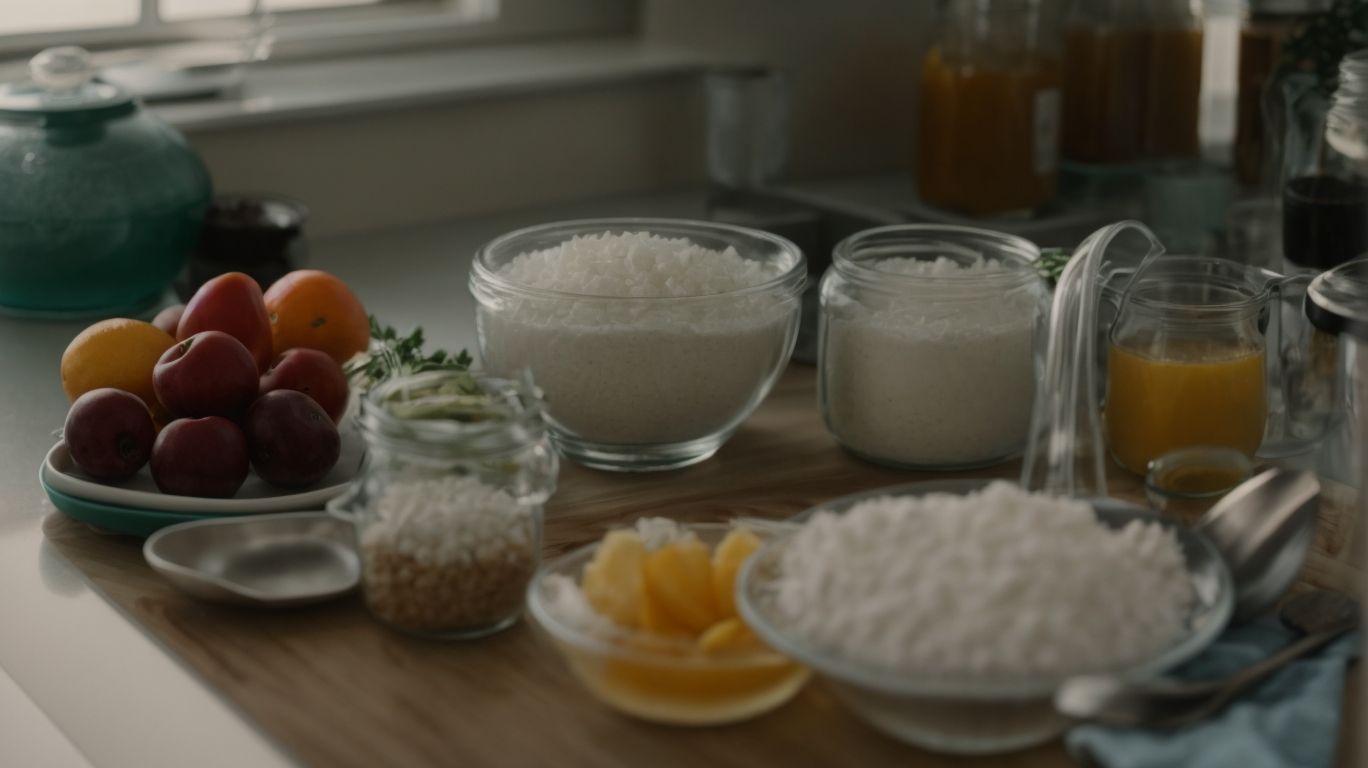
Credits: Poormet.Com – Bryan Lewis
To enhance the cooking experience with frozen meals, consider adjusting cooking times, incorporating seasonings and sauces, and ensuring proper storage of leftovers using practical tips.
When cooking frozen meals, consulting the packaging for recommended cooking times is crucial. Keep in mind that different appliances may require slight adjustments. Experiment with reducing or increasing cooking times by a few minutes to achieve the desired texture and temperature.
Seasonings and sauces play a vital role in elevating the flavors of frozen meals. Try adding herbs, spices, or premade sauces to customize the taste to your preference.
After enjoying your meal, it’s essential to store any leftovers correctly to maintain freshness and prevent spoilage. Transfer leftover portions into airtight containers or freezer bags to extend their shelf life. Label the containers with the date to track freshness and ensure they are consumed within a reasonable timeframe. Following these cooking tips and storage guidelines can help you make the most of your frozen meals.”
Adjust Cooking Times
Adjusting cooking times is crucial when cooking meals from frozen to ensure thorough heating and food safety within the recommended temperature range.
When cooking frozen meals, it is essential to note that the typical cooking times may not be sufficient due to the lower starting temperature of the food.
Therefore, it is advisable to extend the cooking duration to compensate for this temperature difference and ensure that the food reaches the appropriate internal temperature for safe consumption.
By following specific guidelines provided on the packaging or by referring to reliable cooking charts, one can determine the necessary adjustments in cooking times based on the type and quantity of food being prepared.
Use Seasonings and Sauces
Enhance the flavors of frozen meals by incorporating a variety of seasonings and sauces during the cooking process, elevating the overall taste and quality of the dishes.
In terms of preparing frozen dinners, the addition of homemade sauces or unique spice blends can truly transform a mundane meal into a culinary delight. For instance, a creamy garlic parmesan sauce can enrich the flavor of a simple frozen chicken dish, while a tangy teriyaki glaze can add depth to stir-fried vegetables. The beauty of using different seasonings is that they not only enhance taste but also provide a personalized touch to your meals. By experimenting with various herbs, spices, and sauces, you have the power to elevate the quality and enjoyment of your dining experience.
Check for Doneness
Ensure that frozen meals, especially those containing chicken, are thoroughly cooked by checking the internal temperature and verifying that all ingredients are cooked properly.
In terms of frozen meals, the risk of undercooking can be higher due to variations in cooking equipment and individual heating processes. To avoid any potential health risks, it’s essential to follow the recommended cooking instructions on the packaging diligently.
- Always use a food thermometer to check the internal temperature of the meal, ensuring that it reaches a safe level, typically 165°F (74°C) for poultry like chicken.
- It’s important to remember that different ingredients may require varied cooking times, so pay close attention to any specifics provided.
By taking these precautions, you can enjoy your frozen meals safely and deliciously.”
Store Leftovers Properly
After cooking frozen meals, it is crucial to store any leftovers properly to maintain food safety and ensure meal prep efficiency for future consumption.
Proper leftover storage not only extends the shelf life of your meals but also helps in preventing foodborne illnesses by reducing the risk of bacterial contamination. When organizing your food pantry for frozen ingredients, consider using clear containers or resealable bags to keep items visible and easily accessible. Labeling containers with the date of preparation can aid in tracking freshness and avoiding spoilage. To gain more insights and tips on effective meal prepping techniques, platforms like Stack Exchange offer a wealth of resources shared by experienced individuals in the food preparation community.
Frequently Asked Questions
What are the benefits of cooking meals from frozen?
Answer: Cooking meals from frozen can save time, reduce food waste, and preserve the nutritional value of ingredients.
What is the best way to thaw frozen ingredients before cooking?
Answer: The best way to thaw frozen ingredients is to leave them in the refrigerator overnight. If you need to thaw them quickly, you can also use the microwave or place them in a bowl of cold water.
Can I cook frozen meals in a slow cooker?
Answer: Yes, you can cook frozen meals in a slow cooker, but it is important to follow specific guidelines to ensure food safety. For example, make sure the internal temperature of the dish reaches at least 165°F before serving.
What are some tips for cooking frozen fish?
Answer: To cook frozen fish, it is best to thaw it first. If you are short on time, you can also cook it directly from frozen, but this may result in a less flavorful and moist dish. Make sure to follow the recommended cooking time and temperatures for the specific type of fish.
Can I refreeze meals that have been cooked from frozen?
Answer: It is generally safe to refreeze cooked meals that have been cooked from frozen, as long as they were thawed and cooked properly. However, it is best to consume the entire dish to avoid any potential risks of foodborne illness.
Are there any specific safety precautions to take when cooking meals from frozen?
Answer: Yes, it is important to make sure that the internal temperature of the dish reaches at least 165°F to ensure that any harmful bacteria are killed. It is also important to follow proper thawing and cooking methods to ensure food safety.

